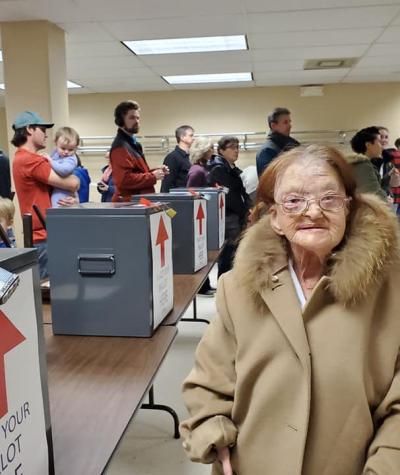Free and fair elections rely on every voter having the ability to make their voice heard. Unfortunately, voters with disabilities are often met with a range of disproportionately burdensome barriers — from polling locations without ramps to restrictions on accessible voting options like vote-by-mail — that limit their ability to access the ballot and ultimately undermine their freedom to vote.
Increasing accessible voting options helps all Americans make their voices heard. Yet in the year after the 2020 presidential election, nine states passed new laws that limited voting access.
Rather than creating barriers to voter registration and ballot access, states should be implementing pro-voter reforms that increase voter registration and encourage participation in our democracy — and they should ensure that existing voting policies and procedures are accessible for voters with disabilities.
Around one in four American adults have a disability, according to estimates from the Center for Disease Control (CDC). Among the categories that the CDC includes for different types of disabilities are impairments in hearing, vision, cognition and mobility.
While not every person with a disability will have trouble voting due to their disability, such conditions can and do make voting more difficult for many Americans. When further hurdles are placed before them by restrictive legislation, casting a ballot can become nearly impossible for some members of the disability community.
A survey issued by the U.S. Election Assistance Commission (EAC) found that one in seven voters with disabilities reported difficulties voting in the 2022 midterms and the likelihood of encountering a difficulty as a disabled voter was significantly higher compared to a nondisabled voter — 20% to 6%, respectively.
Since disabilities can look different for different people, there is no one method that will make voting accessible for everyone. Because of that, having a wide array of available voting methods and opportunities can provide voters with disabilities the freedom to choose the method that works best for them.
In addition to in-person Election Day voting, methods like in-person early voting, vote-by-mail, curbside voting and ballot drop boxes should also be made available to maximize voting accessibility for people in the disability community. Yet, rather than improving access, many states’ recently enacted anti-voter laws and proposed bills reduce access to these voting methods.
In advance of the 2024 election, 14 states enacted over a dozen restrictive voting laws that would disenfranchise voters with disabilities, including laws that criminalize absentee ballot assistance and narrow access to vote-by-mail.
In many cases, state lawmakers intentionally excluded members of the disability community from the legislative process, preventing them from offering insights gleaned from their personal experiences with their states’ voting systems.
As Gaylon Tootle, a blind Black disability rights advocate in Georgia wrote in an op-ed published while the state’s anti-voter bill, SB 202, was still being refined, “I’m speaking out because — if passed — there would be collateral damage for my community, and we’ve been ignored throughout the process.
“Proposals to limit early voting, remove drop boxes for ballot collection and even prevent people from handing out water to people standing in line at the polls are disrespectful. It’s all trying to tell my community we don’t matter,” Tootle continued.
To help make voting more accessible to Americans with disabilities, Campaign Legal Center (CLC) represented Self-Advocacy Solutions (SAS), a disability rights organization, the League of Women Voters North Dakota (LWVND) and Maria Romo, a special education paraeducator with multiple sclerosis (MS), in a case to ensure that the North Dakota counted all validly cast mail ballots.
Similarly, CLC represented the League of Women Voters of the U.S. (LWVUS), the League of Women Voters of New York (LWVNY) and Carmelita Palmer, who lives in the state of New York and has been diagnosed with a neurological condition that causes hand tremors.
This lawsuit stopped the state from using an unreliable signature match process to justify rejecting voters’ ballots — in part because this process would have had a disproportionate effect on voters with mobility disabilities.
As a result of CLC’s lawsuit, New York updated its signature match laws to be less restrictive. As a result, the rejection rate for mail ballots in the 2020 general election was 4%, down from a previous rate of 14%. Furthermore, nearly 9,000 New Yorkers were able to address deficiencies in their ballots and have them counted.
CLC also successfully sued to suspend Rhode Island’s witness requirement during the pandemic, which would have made voting in 2020 very challenging for those with vision-related disabilities, like Miranda Oakley, who has been blind her entire life.
Additionally, in April 2024, CLC sued alongside other voting rights, civil rights and disability rights groups against Alabama’s SB 1, an anti-voter law that severely penalizes assisting voters in obtaining an absentee ballot — a barrier which disproportionately impacts voters with disabilities.
Our democracy works best when every voter can participate in it. Dismantling the barriers that undermine voters with disabilities’ freedom to vote is essential to achieving a fair and inclusive democracy.

